75 Types Of Flowers You Can Eat
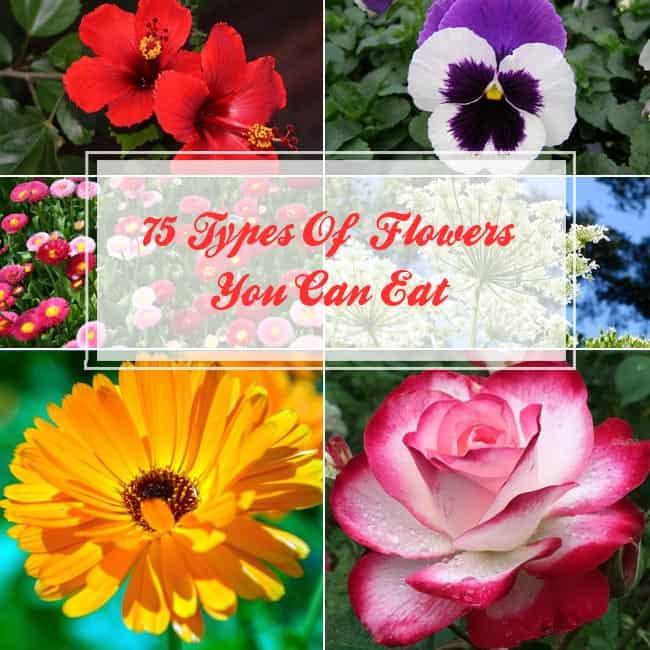
Did you know that there are more than 70 types of flowers that you can eat? Yes, flowers have long been used in culinary practices all across the globe. The ancient Greeks and Romans too used edible flowers in cooking food. In modern times, many kinds of flowers are used in cooking soups and salads, with a few of them being used as garnishes as well as toppings. Some edible flowers can be consumed in parts, while some can be eaten in whole. Flowers are used for adding a distinct flavor or color to food and some also lend a unique fragrance to dishes. So, here is an interesting edible flowers list, some of which will surprise you!
1. Arugula

Image Credit: rootsimple
Arugula: It is known as Eruca sativa. Arugula is a plant that thrives in cold season and its blossoms are small and white in color.
Edible Parts: Leaves, flowers, seeds, sprouts.
Nutrition: Proteins, carbohydrates, fats, fiber, energy, minerals, vitamins, calcium, manganese and flavonoids.
Flavor: Some Arugula blooms are yellow with dark centers, emanating a peppery fragrance, just like its leaves. The flower is usually added to salads for its spicy flavor. The buds of this flower are milder in flavor than the leaves that are more peppery.
How to eat Arugula
Leaves: These are added to sandwiches.
Flowers: If you want to make zesty sandwiches, add arugula flowers for an an added kick of peppery flavor. Once you bring arugula flowers fresh from the market, these have to be consumed soon. Till the time you use it in cooking, make sure to store the flowers in a glass of water kept in the fridge.
2. Calendula

Image Credit: maxpull-gdvuch3veo
Also known as Calendula officinalis, Calendula is your marigold flower that is one of the most commonly planted flowers in anyone’s garden. It belongs to the compositae family. Most people grow lots of these yellow to orange flowers for increasing the visual appeal of their gardens. But do you know that these are edible too?
Edible parts: Flower petals
Nutrition: Its packed with rich nutrients like Flavonoids, Lionleic Acid, Sterols, Oleanolic Acid, Calendic Acid, and Carotenoids.
Flavor: The petals of a Calendula are edible and are flavorful, though a bit bitter in taste. A calendula bloom has a citrusy flavor that ranges between bitter to tangy, sometimes peppery.
How to eat Calendulas
These flowers are used to add color to soups and salads just like saffron. Once you buy the flowers from the market, consume these fast as these are not very long lasting. If you want to use the flowers in teas, then add the dried calendulas.
3. Sunflowers

Image Credit: almanac
Known as Genus Helianthus, Sunflower is a bright yellow flower that grows in fields and gardens of most people.
Edible parts: Seeds, roots, leaves and petals.
Nutrition: There are many uses of a sunflower. The sunflowers are rich sources of vitamin E and B1, Protein, Fats, Folate, Phosphorus and Magnesium.
Flavor: The petals of the sunflower are bitter in flavor but these can be added to food items for enhancing the color.
How to eat Sunflowers
Seeds: The seeds of the sunflower can be eaten roasted or can also be added to salads or soups for enhancement of taste. The seeds are loved by most as they have a typical nutty flavor plus they are also a good source of Fiber and Protein. Many people add the seeds in their cereal.
Petals: Sunflower petals, though taste bitter but are added to foods for color.
Sprouts: Just when the sprouts are 1 to 2 inches tall, eat them by adding in salads or add them as toppings on grilled fish or sandwiches.
4. Dandelions
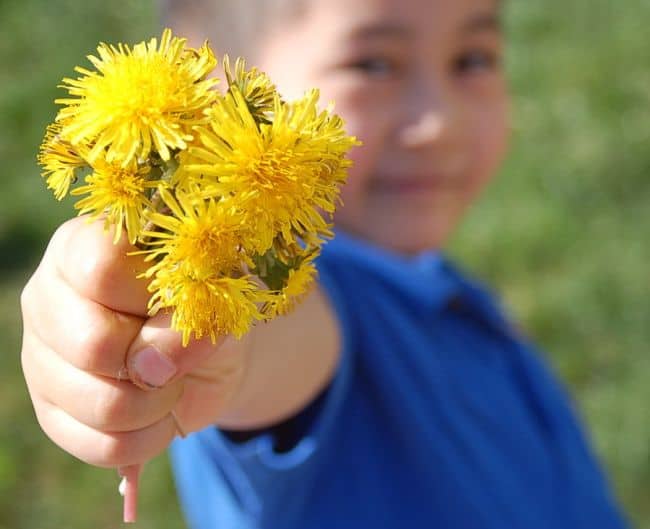
Image Credit: lauragraceweldon
Known as Taxacum officinalis, the Dandelion is a totally edible flower that tastes sweet when picked unopened.
Edible parts: Buds, leaves, roots and petals.
Nutrition: Dandelions are packed with rich nutrients like Thiamine, Calcium, Iron, Manganese, Fiber, Vitamin C and B6, Phosphorous, Copper and Folate.
Flavor: Dandelions leaves have a nutty taste and its seeds are edible too. Flowers are bitter to tangy to spicy.
How to eat Dandelions
Buds: The flower buds taste similar to honey and are added to pasta and pastries. The Dandelion buds are also added to rice to lend it a unique sweet taste. Usually they are eaten straight.
Roots: The roots of a Dandelion are roasted and then added to make herbal coffee. If you look up the internet, you will find many recipes containing Dandelions like Dandelion wine and cake.
5. Hibiscus

Image Credit: latin-wife
In this list of best edible flowers, how can we forget mentioning about Hibiscus? Known by its scientific name – Hibiscus sabdariffa, the flower is consumed in many forms all across the planet.
Edible parts: Roots and flower.
Nutrition: Many people make herbal tea using this medicinal flower that is a rich source of many nutrients like Fiber, Amino Acids, Calcium and Protein.
Flavor: It tastes like cranberry and its added to tea and soups.
How to eat Hibiscus
Some people eat it by converting it into a pickle or they even eat it raw. The flowers are also eaten stuffed, very much like squash blossoms. Chinese people use the petals of the Hibiscus flower in cakes, while Indians boil the flower petals and then mix sugar to convert it into a cool and refreshing icy drink.
Also Read: Best Annual Flowers for Full Sun
6. Squash Blossoms
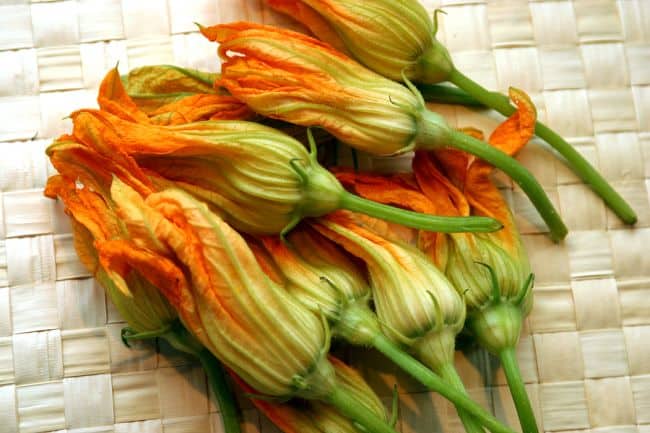
Image Credit: harvesttotable
The scientific name of squash blossoms is Cucurbita Maxima. The squash plant has flowers that are similar to that of a zucchini. Squash blossoms are a must to eat specially during summer when the markets are seen flooded with these dainty beautiful flowers.
Edible parts: Blossoms.
Nutrition: The blossoms of squash are edible and contain many nutrients like Calcium, Vitamin C, and Vitamin A.
Flavor: Squash blossoms have a vegetable like flavor.
How to eat Squash Blossoms
The use of the blossoms is very varied. These can be used in salads in original form, or else can also be stuffed with goat cheese. The stuffed blossoms can be fried and then eaten. Many households in Italy and Mexico fry these blossoms by dipping these in some sort of batter. The fillings used are thyme, basil and ricotta. The squash blossoms are also shredded to be garnished over pasta, or are used in making pasta sauces. Steamed squash blossoms are also very popular and loved by one and all.
7. Roses

Image Credit: garden
Rose is known as genus Rosa and is one of the most commonly eaten flowers in the world. Flower petals are used to flavor teas and are also used to make rose water that is used for a variety of purposes. Most Indian and Middle Eastern cuisines feature rose petals as one of the primary ingredients.
Edible parts: The Rose petals and Rose hips are edible.
Nutrition: The Rose hips contain Vitamin C, Zeaxanthin, Carotenoids Beta-Carotene and Lycopene. Petals too contain small amounts of Vitamin C.
Flavor: Roses have a sweet taste ranging from minty to spicy.
How to eat Roses
People add rose petals on cakes and desserts as garnish. Roses are also used in making cocktails and jams. If you are keen to use rose petals in cooking, use these to make cupcakes, candies and milk. However, use only such roses that are grown organically.
8. Pansy
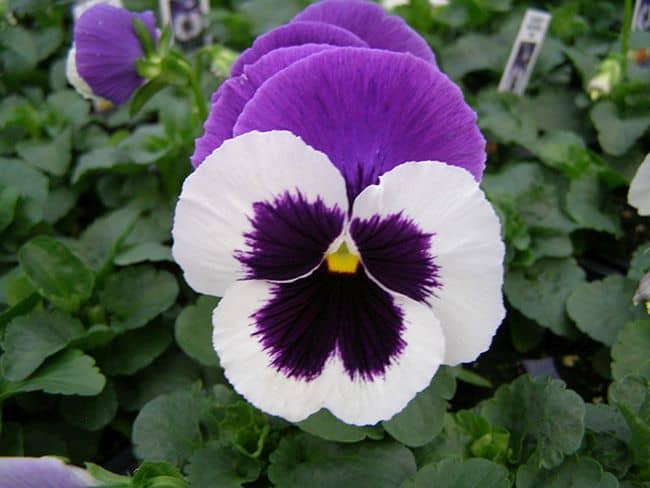
Image Credit: parkswholesaleplants
A very common garden flower, Pansy or Viola Tricolor L is quite edible apart from its beautiful appearance.
Edible parts: Sepals and petals.
Nutrition: The flowers are loaded with Flavonoids, Methyl Salicylate, Resin and Vitamin C.
Flavor: Pansy has a sweet grassy flavor and is used in fruit salads as well as cocktails. It also has a wintergreen taste.
How to eat Pansy
The flower can be added to desserts and soups. The use of candied pansy is also common and this flower is widely used on cakes and cupcakes. If you eat the whole flower, then the taste is stronger but when you have the petals, it seems to be mellowed. Pansies must be eaten only when they are grown organically.
9. Lavender

Image Credit: stevensandson
Known scientifically as Lavandula angustifolia, Lavender is an edible garden flower that can be added on chocolate cakes as garnish.
Edible parts: Its leaves and flowers are edible. One can also use its stems in cooking for flavoring.
Nutrition: Lavenders are packed with Antioxidants, Calcium, Vitamin A, Phytochemicals, and Limonene.
Flavor: Lavender has a floral flavor that lends a pop of unique taste to any dish or desserts. Usually the lavender flowers are minced and then sprinkled over savory foods.
How to eat Lavender
Many jams and cocktails too have traces of lavender. Some Lavender flowers are tastier than others of the same specie like Levendula x intermedia ‘Provence’ and Lavendula angustifolia. You can add lavender to make refreshing summer drinks. Some people also make lavender sugar which is used in baking breads and cakes. Just take a jar or a canister and then mix fresh or dried up lavender flowers along with a few cups of sugar. Keep the mixture inside for a week so that the sugar gets infused with the flowers. Once they are put, you can grind them together to offer a delightful flavor to your cakes.
10. Angelica

Image Credit: organicfacts
There are many garden flowers you can eat without thinking twice of which Angelica or Angelica archangelica is also a part. Angelica or Angelica archangelica is a close relative of celery.
Edible parts: Leaves and blossoms.
Nutrition: This plant nutrients like Safrole, Linoleic acid, Valeric oil, Angelicin and Angelic acid – All these are therapeutic oils.
Flavor: The plant has pink colored flowers that have licorice scent.
How to eat Angelica
You can use the blooms in salads. But, most people use its leaves that are usually stronger in flavor.
Also Read: How to grow and Care for Coreopsis Plants
11. Bachelor’s button
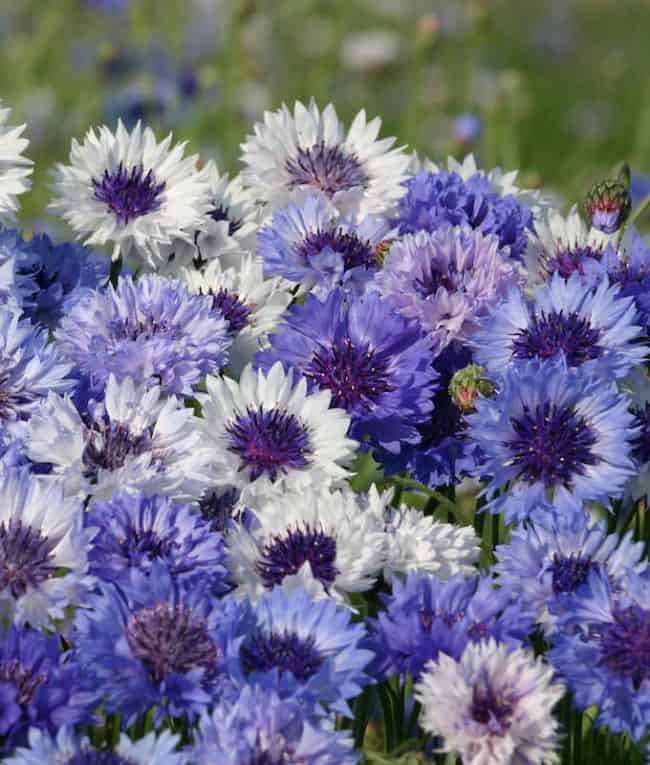
Image Credit: swallowtailgardenseeds
If you want to add a pop of color to your salad, then add Bachelor’s button, also known as Centauria cynaus. There are different types of this flower that comes in myriad colors like pink, red and blueish purple.
Edible parts: Flowers
Flavor: The flowers have a milder peppery flavor with a hint of sweet spice. Usually people use the flower fresh in culinary practices.
How to eat Bachelor’s button
Mostly, these flowers are used as a decorative garnish. These flowers have an interesting ethic background. It was in the tomb of Tutankhamen that these flowers were discovered for the first time in 1340 B.C.
12. Anise hyssop
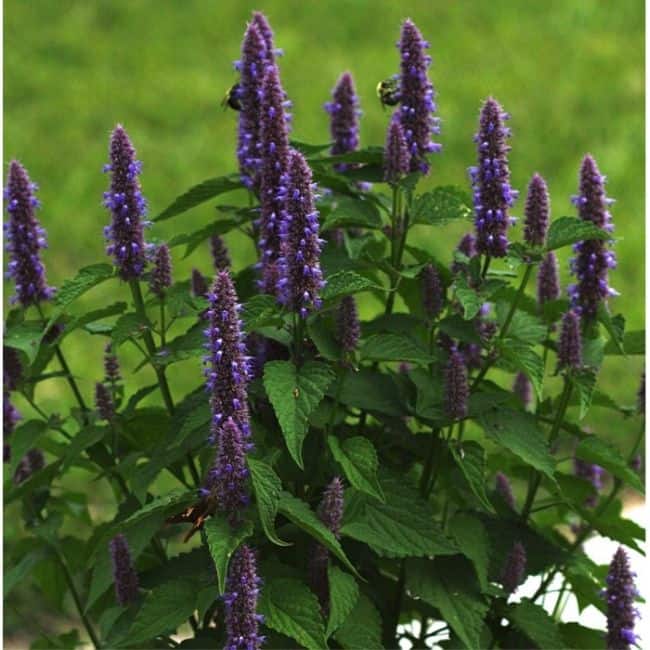
Image Credit: theseedsmaster
If its grown organically, Agastache foeniculum or Anise Hyssop can be added to pastas and soups.
Edible parts: Both its flowers and leaves are edible.
Nutrition: Anise hyssop contains compounds such as alpha and beta pinene, alpha terpinene, pinocamphone, and camphene. All these offer many health benefits.
Flavor: Anise flavor.
How to eat Anise hyssop
The flower is also used as garnish. Mostly its available in dry form. While making soups, the flowers are usually added as a finishing touch to lend a spicy flavor. The flowers are also cooked along with cheese, and also added when baking pita bread. Most Israeli and Greek cuisines feature this flower. Some people also make use of these flowers in making pudding and ice creams. Candies and jams too are made using these spicy flowers. Medicinal teas like black licorice flavored tea often feature Anise Hyssop.
13. Nasturtium
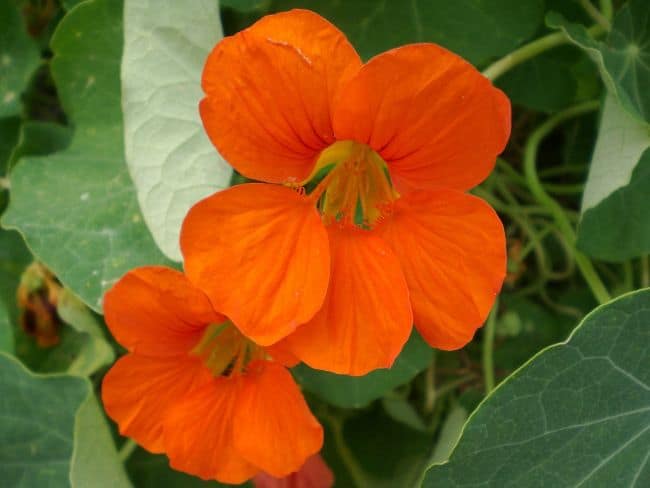
Image Credit: almanac
A close relative of broccoli and cabbage, the Nasturtium flower, also known as Tropaeolum majus is used as decorations in salads and other savory foods.
Edible parts: Flowers and leaves.
Nutrition: Its packed with essential nutrients like Vitamin C, Phenols, Iron, Glucosinolates, Flavonoids, Mustard Oil, and Carotenoids.
Flavor: The Nasturtium flower has a sweet and pleasant flavor which makes it a good option to be used as garnishes over salads.
How to eat Nasturtium
The flower is edible and is usually harvested as soon as it opens. The leaves are also used in making food. However, its the bigger flowers that are mostly used. The smaller flowers are best used for eating whole. Some people eat stuffed nasturtiums. The filling is usually made of cheese or guacamole. Its seeds can be pickled. The flower buds are used in cocktails as well.
14. Violets

Image Credit: gardenloversclub
Violets are known a Viola Odorata. These are popularly used to make Violet candies and jellies.
Edible Parts: The edible parts of a violet are its leaves and flowers.
Nutrition: A storehouse of rich Iron, Calcium and Vitamin C and A.
Flavor: The violet flowers have a perfumed fragrance while the leaves are grassy.
How to eat Violets
Greens: You can add its leaves in salads or can also prepare it like you would do with spinach.
Flowers: If you preserve the flowers in sugar, then these can also be used as cake or muffin garnishes.
Leaves: These are used in salads.
15. English Daisy
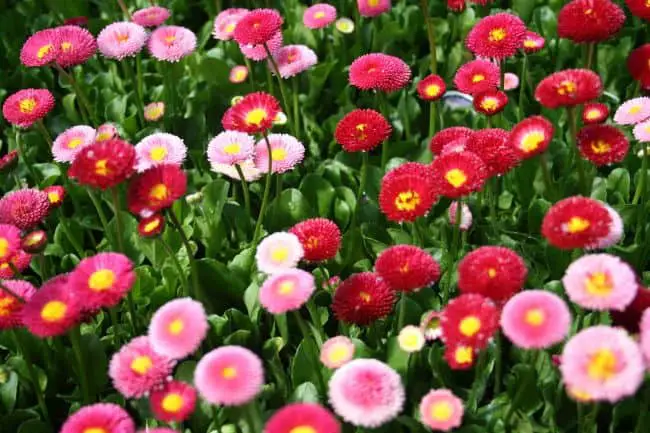
Image Credit: shopify
Known as Bellis perennis, English Daisy flowers are often used to decorate festive foods in the form of garnishing or topping.
Edible parts: Flowers.
Flavor: Though the flowers are very bitter in taste, yet these are totally edible and are used as sprinklers on top of salads.
How to eat English Daisies
You can add them in meals for added flavor. Not merely do these appear attractive as toppings but can also be used as an ingredient in baking cakes and muffins. The flowers can also be used along with basil pasta.
Also Read: 18 uses of Banana Peels in the Garden
16. Bee balm
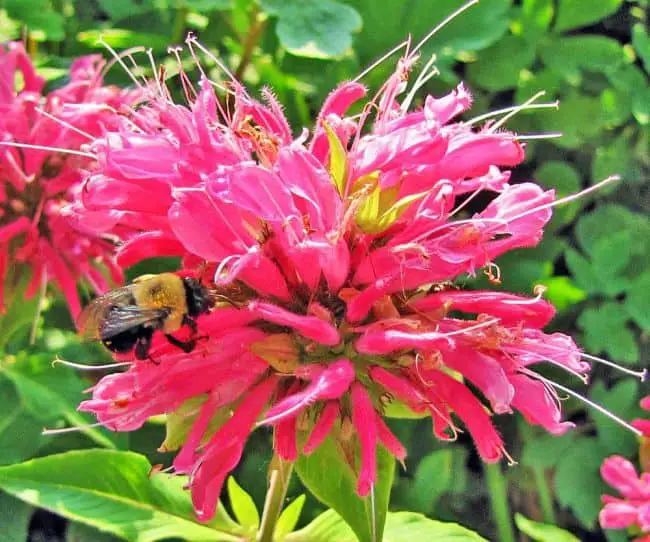
Image Credit: garden
The flower Bee Balm is known as Oswego tea or horsemint.
Edible parts: Bee Balm leaves and flowers are edible, the flowers being very strongly flavored.
Nutrition: The leaves contain oil that helps in eliminating congestion. It also relieves headaches and sore throats.
Flavor: The flowers have a strong flavor.
How to eat Bee Balm
The flowers are added as garnish in salads while the leaves are used to make tea. Mostly grown in North America, the flower is widely used in preparing jellies, and surprisingly – breads. You can also use the flowers in making jams and sorbets.
17. Chamomile

Image Credit: 3wbio
Chamomile flower is yet another addition to this list of best edible flowers.
Edible parts: Flower petals.
Flavor: The aroma of dried Chamomile flowers is like that of an apple.
How to eat Chamomile
The flowers look like daisies and can be eaten either in the fresh or dry form. The petals can be torn and then sprinkled over soups and garnished over salads. However, the most common use of chamomile flowers is in making tea. These edible flowers are taken in small amounts and then added to a cup of boiling water to make tea. The chamomile tea relieves sickness and refreshes body and mind.
18. Carnations
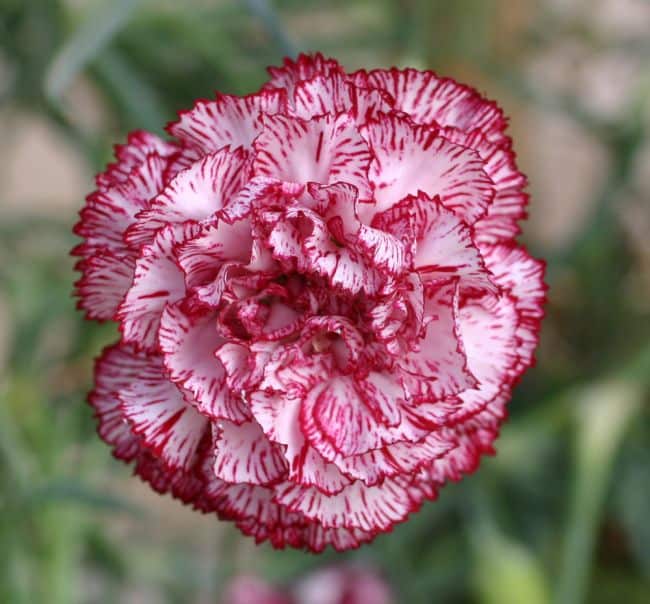
Image Credit: growplants
Another flower in this list of edible flowers list is Carnation, a sweet tasting blossom that has a perfumed aroma. The flower has a miniature version known as Dianthus.
Edible parts: Petals of the flower are edible.
Nutrition: Carnation oil is used to heal skin and calms the senses with its pleasant aroma.
Flavor: People love the flavor of this flower as it has a spicy tang to it.
How to eat Carnations
The petals of a carnation are used in scrambled eggs and also in soups and salads. These are often used to decorate cakes and candies. Carnation petals has been long used to make liqueur called Chartreuse by monks in the early 18th century. If you want to add a perfumed touch to your salad, then toss a few petals of carnations and enliven the appearance. The petals can also be chopped and used with other herbs to be eaten along with meats.
19. Chicory
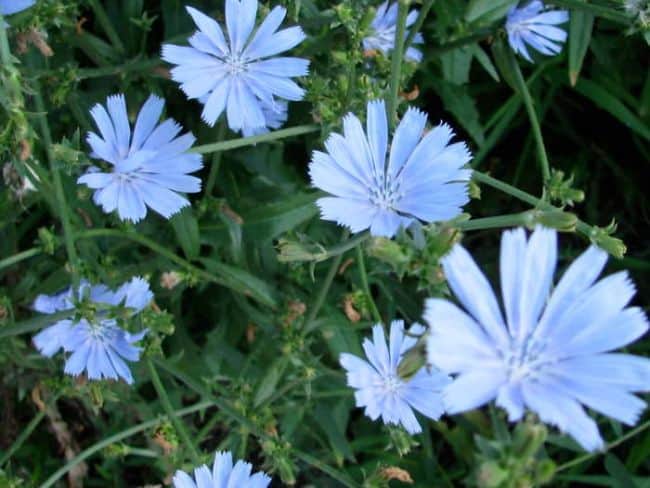
Image Credit: cbsally
A Chicory plant sports flowers of lavender or blue color. Its popularly called Blue Dandelion and is an edible plant.
Edible parts: Its flowers, roots and leaves can all be eaten.
Flavor: Earthy and bitter.
How to eat Chicory
The petals are often torn and added to salads because they produce an earthy flavor that appeals to the taste buds. Some people may find the flavor a little bitter though. If you have Chicory flower buds that are still closed, utilize these as pickled capers. The flower looks very attractive and therefore is used as a topping or garnish.
20. Dill

Image Credit: enclosuretakerefuge
Edible parts: Flowers.
Flavor: The flowers of dill have a strong flavor than the leaves.
How to eat Dill
The tall and tiny yellow umbels of Dill flowers are used when cooking meats and fish. The flowers have to be preserved once they are picked as they don’t remain fresh for a long time. These can also be consumed raw in salads. Many people add the dill flowers in their original color and shape to cucumber pickles. You can add Dill flowers as garnishes on drinks. You can also use the chopped dill flowers to make sauces and dips. One can also use frozen Dill flowers to be used in soups.
Also Read: 15 Natural Ways to Kill Weeds in your Garden
A List of the other 55 Flowers you can eat
Apart from the above edible flowers list containing the names of 20 edible flowers, here are presenting the next 55 flower names that are all consumable and safe. Do take a look:
1. Clover
2. Fennel
3. Fuchsia
4. Hollyhock
5. Jasmine
6. Lemon Verbena
7. Radish flower
8. Sage
9. Rosemary flower
10. Mint flower
11. Johnny Jump-Up
12. Impatiens
13. Lilac
14. Gladiolus
15. Cilantro flower
16. Chrysanthemum
17. Borage
18. Dame’s Rocket
19. Scented Geraniums
20. Zucchini Blossoms
21. Day Lilies
22. Chervil
23. Pea
24. Primrose
25. Basil
26. Allium
27. Scarlet Runner Beans
28. Honeysuckle
29. Daylily
30. Apple Blossoms
31. Golden Alexanders
32. Betony
33. Broom
34. Burnet
35. Catnip
36. Cattail
37. Clary
38. Coltsfoot
39. Costmary
40. Elder
41. Goat’s Beard
42. Grape Hyacinth
43. Hawthorne
44. Heather
45. Jonquil
46. Lemon Blossom
47. Linden
48. Locust
49. Meadowsweet
50. Passionflower
51. Poppies
52. Saffron
53. Thistle
54. Thyme
55. Yucca
Final Thoughts
The above are a few examples of flowers we eat, but there are many more that are not covered in today’s post. Edible flowers can be eaten safely though you may have to conduct a research thoroughly before adding them to your soups, drinks or salads. These flowers help in adding a distinctive color and flavor to foods that otherwise would taste bland. There are so many possibilities with these flowers you can eat…so do not fear and cook at least one dish with these….All the best!

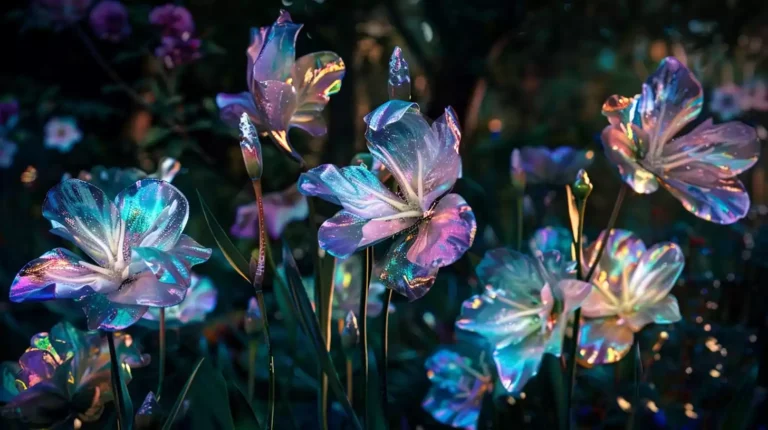
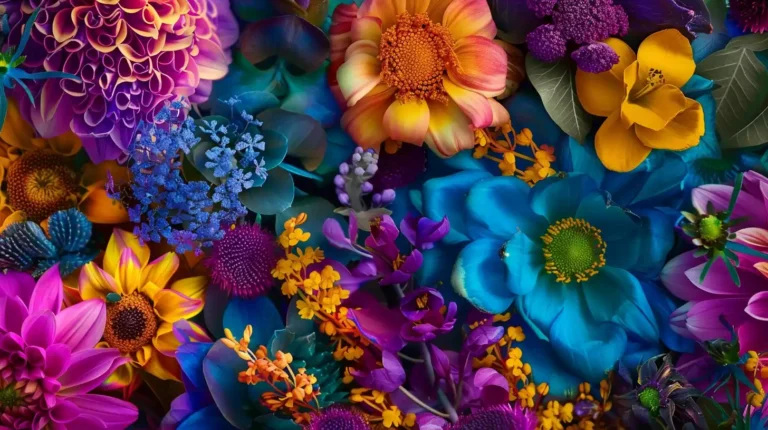
This was informative and interesting! I appreciated that the way or method of using these in order to eat them was given !
Thank you, I can’t wait to try some of these this summer!
J.B.